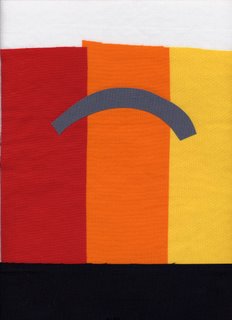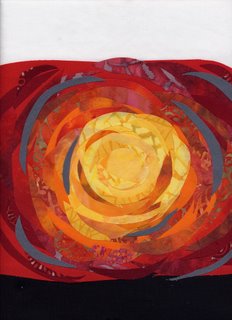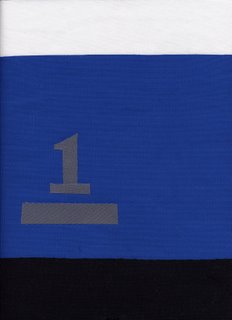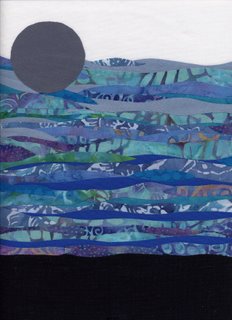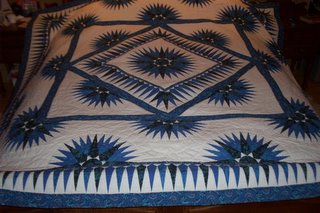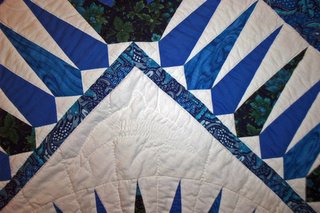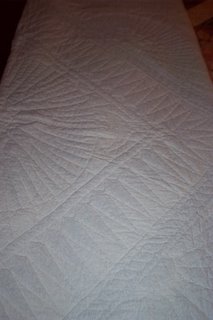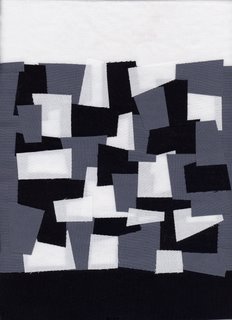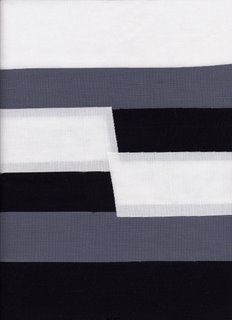Color Study 4: Complementary
Monday, February 20th, 2006Opposites attract…or, colors on the opposite side of the color wheel make each other “pop.” Hmmm….think I’d better upload a color wheel, hunh? OK…here you go, same as yesterday:
Look at the colors on opposite sides of the wheel….no matter which two colors you pick, as long as they are at the other end of a straight line on the other side of the wheel, they are complementary (note: this in not a compliment, which is a nice thing said about someone/thing!).
Christmas red and green are the classic example, so that’s what I used for my sample (though I may do a couple more of these using other “opposites”). On the back, I illustrated the concept with the straight line: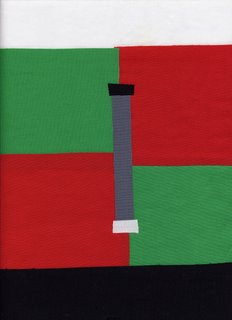
For the front, I used a “framed” composition, and just a smattering of reds and greens in different values…another color concept.
Value: in color theory, this means how light or dark a color is. White and yellow have a light value. Deep purple and black have a dark value. Medium gray is….ummm… duh…. medium.
If you use one of the “ruby beholder” type tools available in quilting colors, this is one way to determine if fabrics have similar or contrasting value, that is if they are lighter, darker or the same as each other. Another way to determine value is to lay an assortment of fabrics on a photocopier and make a black and white copy. It’s an easy way to determine if you will have sufficient contrast in your quilt (and only you can decide if you want a lot or a little).
Back to the sampler….using assorted values of red and green helps give some life to this piece, making it look like an impressionist garden (it’s that thing I have about representational art…I’m working on it!).
Another one of my wall quilts also illustrates a different set of complementaries on the color wheel: orange and blue. This is why everyone loves the screaming oranges of autumn…the stark contrast with the blue skies is a perfect complement: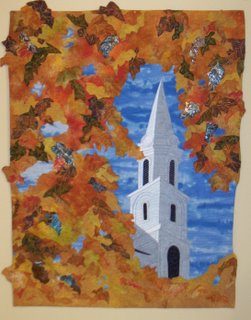
Tomorrow, I’ll talk about Triadic / Primaries as a combination.


